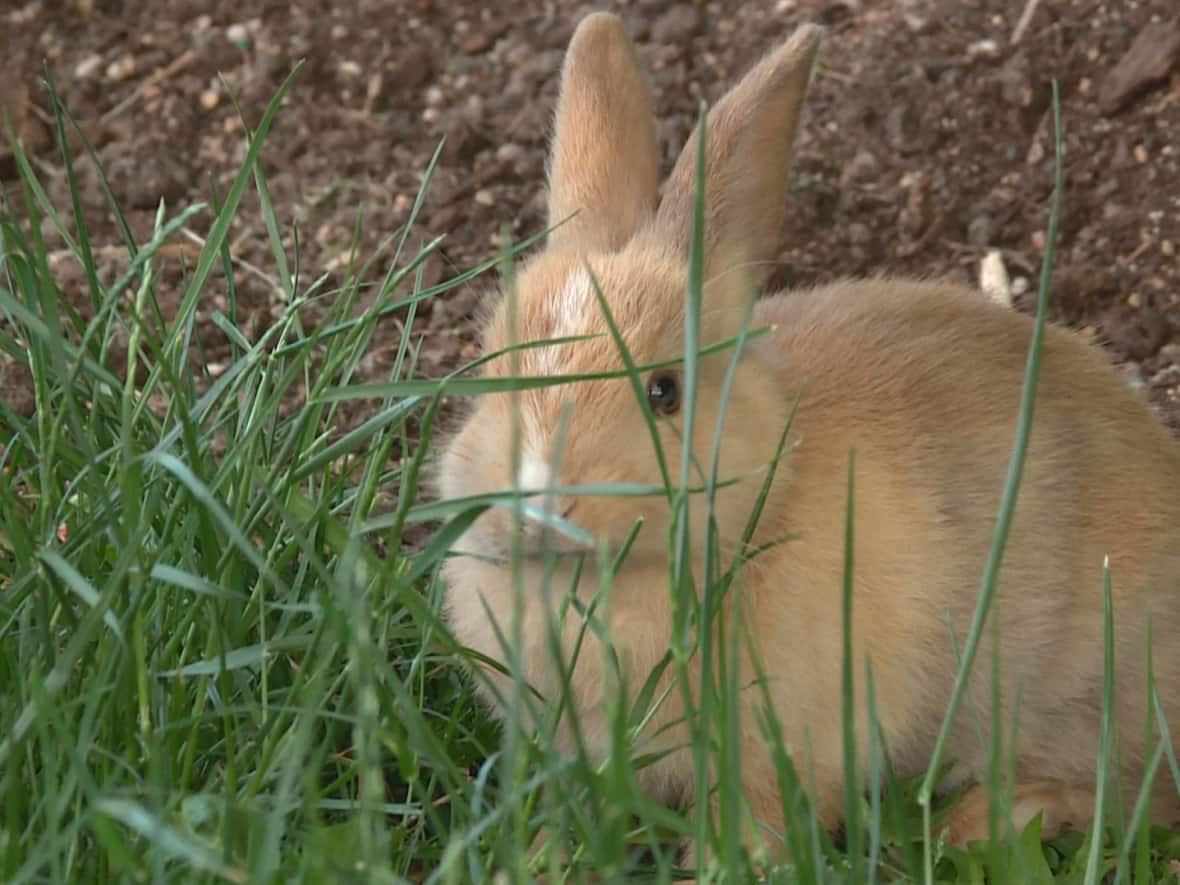Alberta monitoring wild and feral rabbits for signs of 'fast and fatal' viral disease

Provincial investigators are closely watching for signs of any new outbreaks of a highly infectious and deadly disease that has decimated feral rabbit colonies in Edmonton and Calgary.
Rabbit haemorrhagic disease is a sudden, highly contagious and fatal viral disease that infects wild and domestic European rabbits, including most breeds that are preferred as household pets.
The virus is almost always fatal for European rabbits, including domesticated breeds.
However, the RHDV-2 strain currently circulating affects both domestic and wild rabbits.
Wildlife experts are watching for possible spread from feral populations of domesticated bunnies to Alberta's native species of rabbits and hares.
The virus spreads quickly through a colony, causing organ damage and internal bleeding.
The virus has a mortality rate of between 70 and 100 per cent with most infected rabbits dying within a matter of days. Many times, the only signs of infection are sudden death and blood-stained noses.
The Canadian Food Inspection Agency said infected rabbits usually show symptoms within one to five days.
"Death is common after a short period of illness. Death may also occur suddenly without signs," says the CFIA.
The disease rapidly "burns through" an infected colony, said Margo Pybus, a wildlife disease specialist with Alberta Fish and Wildlife and a University of Alberta professor.
"It's so deadly for the European rabbits and hares," she said. "Basically all of the feral rabbits, the domestic rabbits, disappear from the area."
While the risk is considered minimal among wild species, there is a chance it could spread into native species of rabbits and hares, Pybus said.
Pybus expects that the virus will kill colonies of feral rabbits so quickly that it won't have the opportunity to proliferate through native species like hares and jackrabbits.
In Edmonton in the fall of 2021, the virus killed a colony of about 30 rabbits that had lived in Holy Cross Cemetery for more than three decades.
Last month in Calgary, three separate colonies in the Manchester Industrial area in the city's southeast were hit. Within two weeks, most of the feral rabbits were gone.
One mountain cottontail was found among the dead feral rabbits.
It tested positive for the virus and is the first documented case of the virus infecting a native wild species in Alberta since the province's first case was detected in Taber in March 2021.

To date, there is no evidence of a large-scale spillover into wild species in Alberta, Pybus said.
The risk of transmission to wild species is highest in communities, such as Canmore, Alta., where there are established feral populations of domesticated rabbits, she said.
The town has struggled with its rabbit problem for years and relies on a winter trapping program to help keep the population in check.
Between January and April of this year, 288 feral rabbits were culled. That's an increase from the previous year when 180 feral rabbits were trapped.
"You can get an outbreak in that population and it's fast and fatal," Pybus said.
"And if those rabbits are living and sharing the same space with say, wild snowshoe hares or the big jackrabbits, that's where the risk is most concerning."
'Canary in the coal mine'
Rabbit haemorrhagic disease virus has been present in species of European rabbits since the 1980s but wild species in Canada, the U.S, and Mexico were not affected.
That changed in 2010 when the new strain, RHDV-2, was identified in France. The disease escaped from captive rabbits and spread into feral and wild populations.
The first reports of RHDV-2 outbreaks in North America occurred in Quebec in 2016, British Columbia in 2018, and Washington State in 2019.
Starting in early spring 2020, cases in wild jackrabbit and cottontail species were seen in southwestern U.S. and northern Mexico for the first time.
To date, fatal cases have been confirmed in wild species including black-tailed jackrabbits, antelope jackrabbits, desert cottontails, mountain cottontails, and Eastern cottontails in various western states.
"It was the first time we had seen a form of this virus that was able to infect wild species so it was a whole new ball game," Pybus said.
The province will continue to monitor wild species of rabbits and any large-scale deaths among feral populations will be investigated, she said.
"The feral rabbits are the canary in the coal mine for us," she said.


